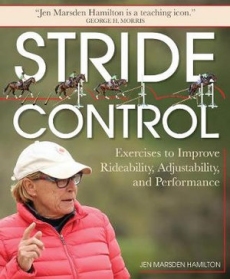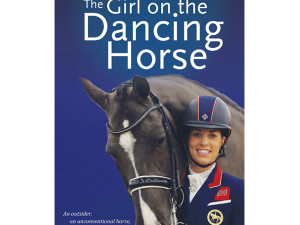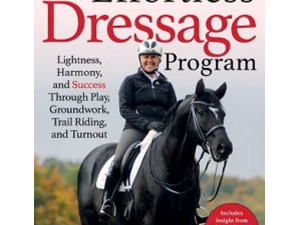Stride Control
Stride Control
$45.00
Stride Control
AUTHOR: JEN MARSDEN HAMILTON
Understanding and implementing stride control (being able to adjust the number of strides before and between fences) improves a horse’s rideability and allows the rider to further improve the horse’s technique over an obstacle. Jen Marsden Hamilton discovered striding from former US Show Jumping Chef d’Equipe George Morris, who credits her as being the first student to whom he taught the method that he’d learned from Bertalan De Némethy, one of his mentors.
Stride control is an essential part of any rider’s development when jumping obstacles, and jumping them well, is a goal. Paperback, 176 pages, illustrated
Out of stock
CompareDescription
Stride Control
Stride control is an essential part of any rider’s development when jumping obstacles, and jumping them well, is a goal. Now, after coaching countless riders and horses around the world in the striding techniques that brought her success during her own impressive competitive career, and Hamilton has compiled her knowledge in a concise book of exercises and insightful strategies.
This fun, approachable guide will help all riders train with correctness and form good habits at home so they can be stars at their next jumping or eventing competition. Exercises include detailed set-up instructions and illustrations for reference; clear discussion of the purpose and strategy for the training session; and helpful tips, to ensure all involved are benefiting from the lesson. Throughout, Hamilton’s straight-talk and wry humour entertain as well as advice, providing an all-around superb guide to a necessary jumping skill.
Related products
The Girl on the Dancing Horse
The Girl on the Dancing Horse $49.95The Girl on the Dancing Horse
The story of an outsider, an unconventional horse and the incredible bond that took them to the top. New Paperback Edition
“To ride into that arena, next to a sea of British flags and hear the roar of clapping and cheering, was so exciting. It’s a sound I will never, ever forget.”
Charlotte Dujardin and her charismatic horse Valegro burst onto the international sports scene with their record-breaking performance at the London, 2012 Olympics. The world was captivated by the young woman with the dazzling smile and her dancing horse.
Dressage 101 Jane Savoie
Dressage 101 Jane Savoie $69.95Dressage 101 Jane Savoie Paperback
The Ultimate Source of Dressage Basics in a Language You Can Understand. Beginning with the three golden rules of dressage training clarity, consistency, and kindness.
DRESSAGE 101 walks you through four stages of dressage education. Stage One is an introductory course in the basics, and Stage Two covers the nuts and bolts of training, including transitions, school figures, and movements. By the time you finish Stage Two, youll have a happy, responsive horse that understands going forward and being straight; accepts contact so you can communicate with him through the reins; moves in a regular rhythm and a steady tempo in all three gaits; and can do transitions, circles, and turns, back up, lengthen his stride, and go sideways. In Stage Three, Jane translates the secrets surrounding the half-halt, enabling you to put your horse on the bit, and adding a whole new dimension to your training.
Uta Graf’s Effortless Dressage Program
Uta Graf’s Effortless Dressage Program $49.95Uta Graf’s Effortless Dressage Program Paperback
Top international dressage rider Uta Gräf has made a name for herself as a trailblazer in the competitive dressage world as she strives to combine the highest levels of performance with natural horse care in observance of the needs of the equine body and mind.
Acknowledging the individuality of each horse and including specific problems and solutions, Graf provides a hands-on guide to following competitive ambition in the dressage ring while keeping what’s best for the horse in mind. The key, above all, is keeping tension and rushing and anxiety at bay; with Graf’s guarantee that her system will keep horse and rider “worry-free,”
Stop, Go, Turn Claire Lilley
Stop, Go, Turn Claire Lilley $36.95Stop, Go, Turn Perfecting the Basics of Riding by Claire Lilley
Being able to stop, go and turn is fundamental for all equestrian riders.
STOP
– How to ride the perfect halt
– Half-halts
– Taking weight behind
GO
– The three basic gaits
– Asking your horse to move
– Understanding rhythm and tempo
TURN
– Flexion and bend and the difference between the two
– Circles and turns
– Changing direction
Author Claire Lilley has written several books including 200+ School Exercises with Poles and the Scales of Training Workbook for Dressage & Jumping.






